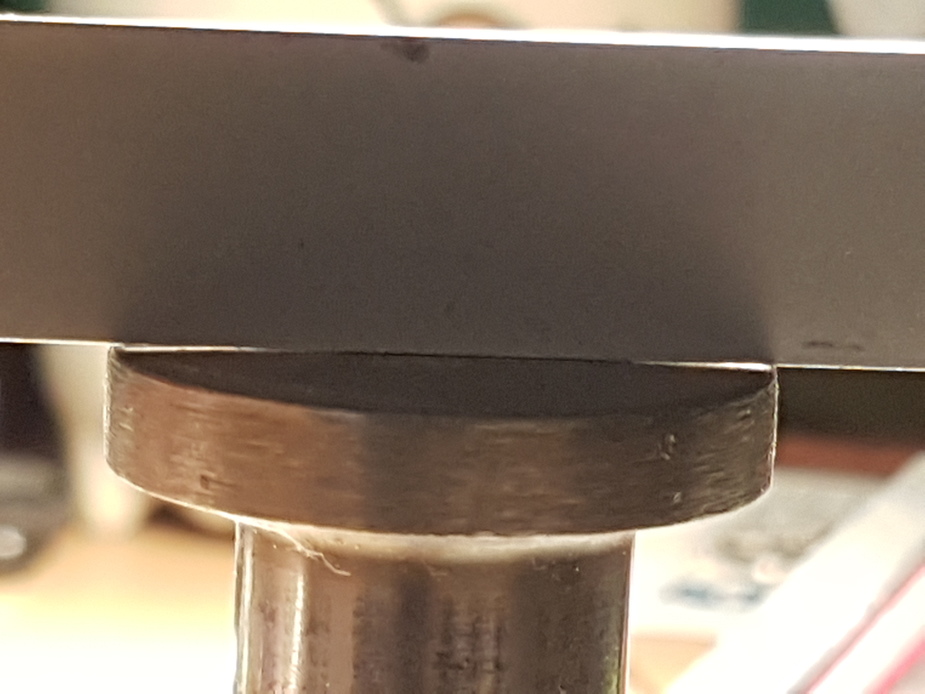My PA28 is in the paint shop but is taking a little longer than expected. I was planning to run a closed loop engine dryer but this particular device has broken down so I need to find another way to preserve the engine for another 4-6 weeks fast! Another factor is that the engine oil was drained last week.
It has dehydrator spark plugs installed since it went in and the inlet/exhaust ports are sealed. I am mainly worried about the camshaft as this is exposed, however, as the oil has been drained, everything is now exposed. It is not possible to run the engine with preserving oil as per the Lycombing instructions as the Aircraft is now spotlessly clean and almost ready for painting. It has been sitting for 4 weeks so the oil flim/camguard would have disappeared by now so I have to act quickly. See Lycoming instructions [ local copy ]
When I used to go water skiing, I used to lay up the boat engine with Quicksilver fogging oil
I also found this online http://www.vapor-tek.co.uk/vaporol/
These volatile preserving oils seem like a good solution. If I can’t get the engine dryer working properly I plan to put in 8 quarts of engine oil to protect the crankshaft bearings and spray in a can or preservative oil through the dipstick.
Can anybody see a problem with this idea? Could it possibly attack any seals? Any other ideas?
A Lyco engine has no parts immersed in oil, except bits of the oil pump I think. The crankshaft is not immersed in oil. The whole engine is pressure lubricated. When it stops running, all the oil runs off down into the sump. This oil runback takes several days to take place, in terms of the last 5mm or so on the dipstick.
Camguard will remain as a coating on everything.
6 weeks should be fine, indoors, in a hangar whose temp is at least a few degrees C above the outside, if you used Camguard previously.
Thanks Peter,
That makes sense as nothing being immersed as there is a big sump underneath. I suppose the crankshaft never has issues as surface tension between the crank and the plain bearings keeps the surfaces coated.
Yes, I always run with Camguard. We are at the 5 week point now and waiting for windows which were promised with a 4 week delivery but could be 8 weeks, then there is Christmas + other delays. I can see mid January as being realistic. I don’t like the idea of 2 1/2 months standing about when it has never sat for more than 3 weeks in the lifetime of the engine.
Any ideas about fogging oil anybody?
Peter wrote:
in a hangar whose temp is at least a few degrees C above the outside,
Yes, that’s a key point. It’s difficult (impossible?) to find a better corrosion inhibitor than that. In a paint shop, both humidity and temperature are important. I can’t imagine they would ever let the relative humidity increase to the condensation temperature. The thing to remember about corrosion is three elements have to come in contact with each other simultaneously: A substrate to corrode (metal), oxygen (air) and an electrolyte (liquid water with some ions, salt). Remove one of those, and it won’t corrode. It’s as simple as that.
It is in a hangar where it is being prepared, not in the heated paint shop. There are delays due to some repairs and waiting for the new windows etc.
My understanding of this issue is not that good as I normally fly weekly so have never worried in the past.
However, surely there is/was water in the engine from combustion products which will cause a slow deterioration. Let’s just assume that the the relative humidity inside the engine after shut down was 90% ++ (People often report steam coming out of the oil filler on shutdown). Are you and Peter saying that after 4 weeks the RH of the engine will be the same as the Hangar as it is not perfectly sealed, hence the water vapour escapes and equalises to outside humidity?
Without drying the engine or coating the metal with an oil film, what would stop rusting? Also as I have drying plugs with Silica gel and as vapour leaks past the piston rings is this sufficient to dry the internals of a well sealed engine?
If possible, check it’s still inside.
I’ve twice had evidence that a wood-and-fabric tailwheel aircraft had been left outside for weeks when some part needed at an Annual was not immediately available.
On one occasion, after I’d flown it back on a dry day, water poured out of the tail after landing. )-:
I would go for the following:
https://www.aircraftspruce.com/catalog/eppages/tanis1.php?recfer=14585
to comply with the instructions in the Lycoming service letter local copy
It doesn’t cost much in the grand scheme of things compared to inadvertent shortening of an engine lifespan.
Hmmm, you are 100% right, Vic. This is an IO540 cam follower:

Camguard does work however. That link is worth a read. The poster “Ed” is the Camguard inventor.
Thank you all for some great responses especially the last two from @vic and @Peter. My closed loop dryer is working again so humidity inside the engine is 16% and falling which is good news. My understanding is that:-
So @vic, you have a really interesting post and photos of why the cams wear so quickly (poor design and lots of loading in a small area), but my question to you is perhaps the microscopic pitting in the hardened layer is the gateway to excessive wear?
Perhaps you would never see the rust but this allows a rough enough surface to start these problems. Also when the hardened layer has worn through then things go downhill fast?
So my question, is the real issue (a) water (rust) or (b) lack or oil that is worst? Or a bit of both?